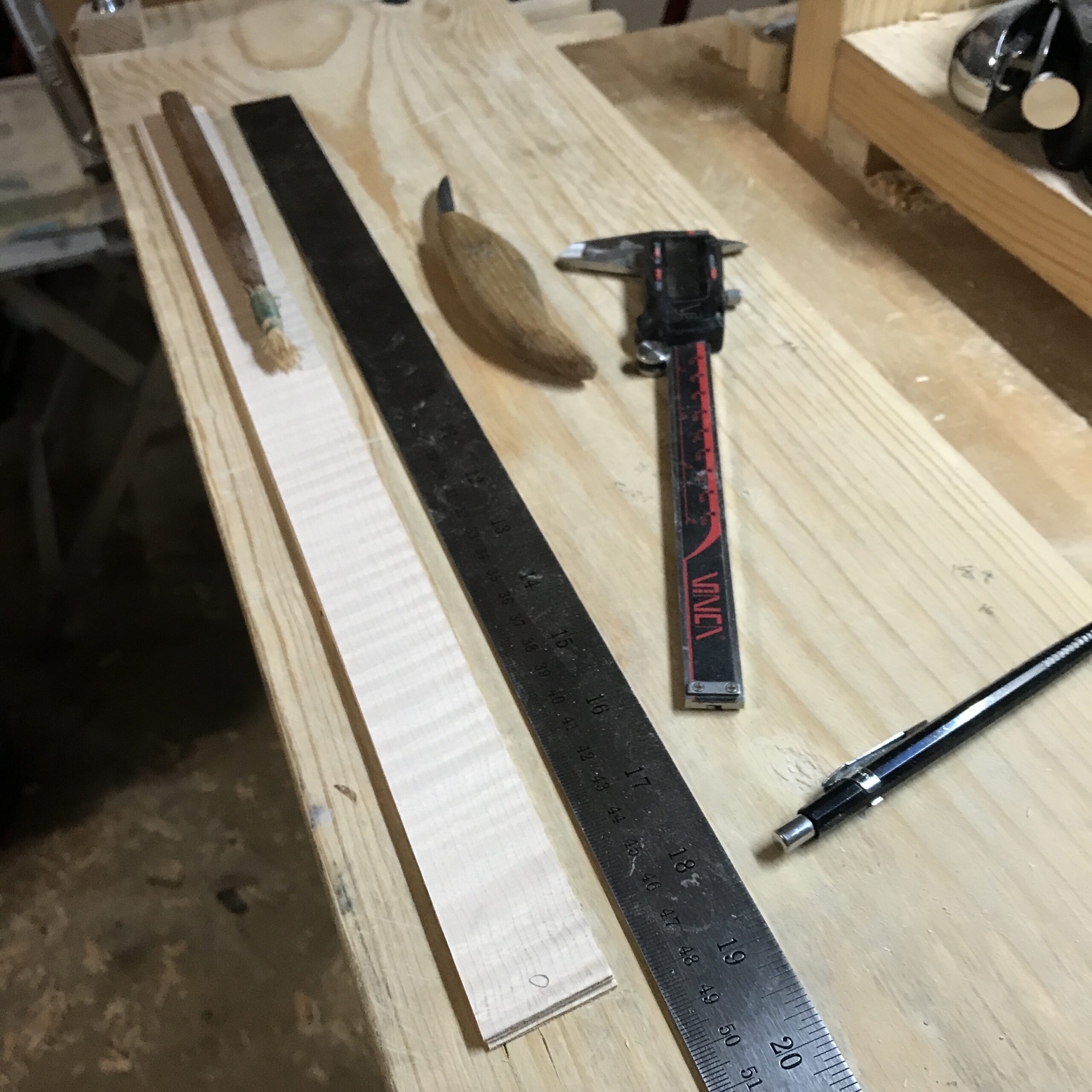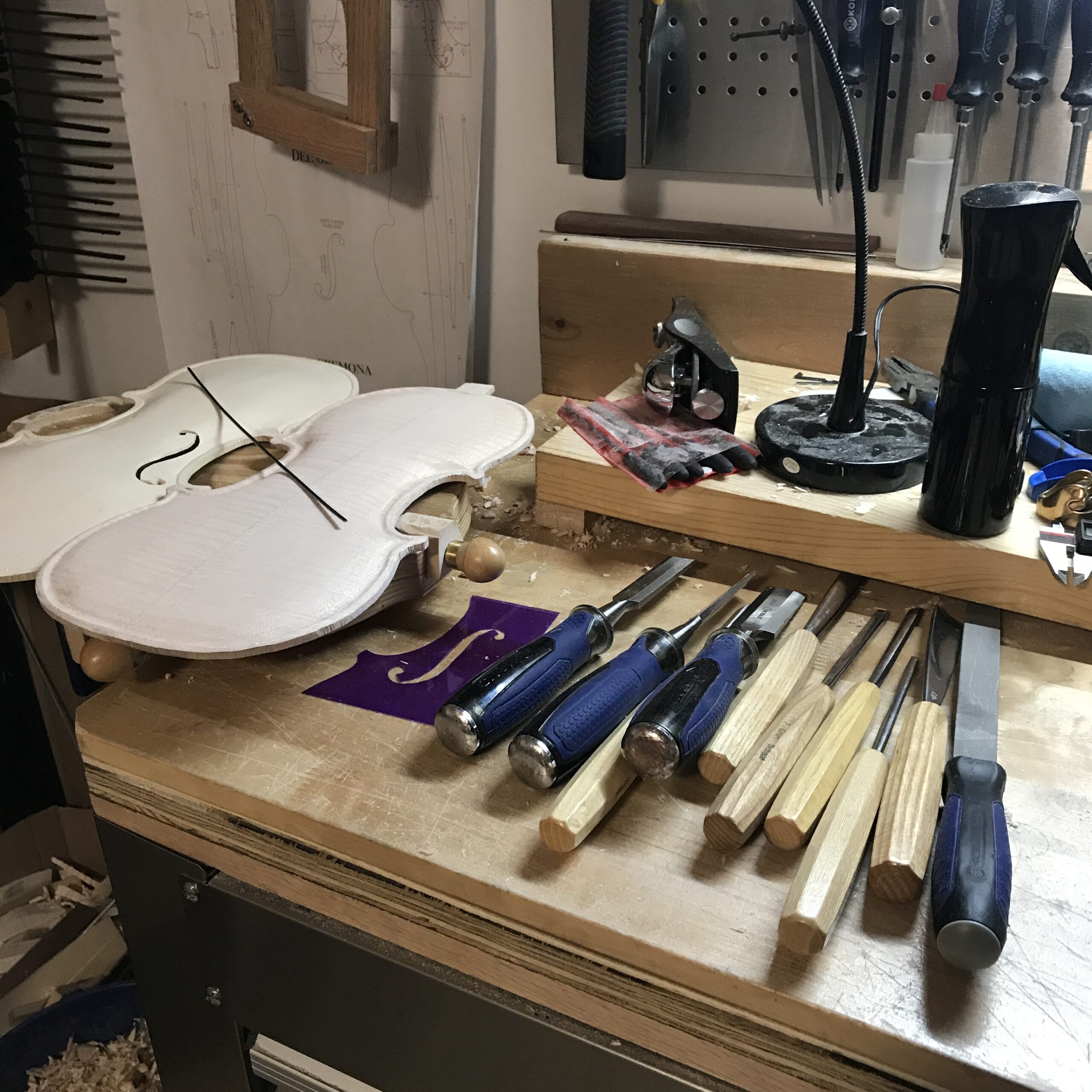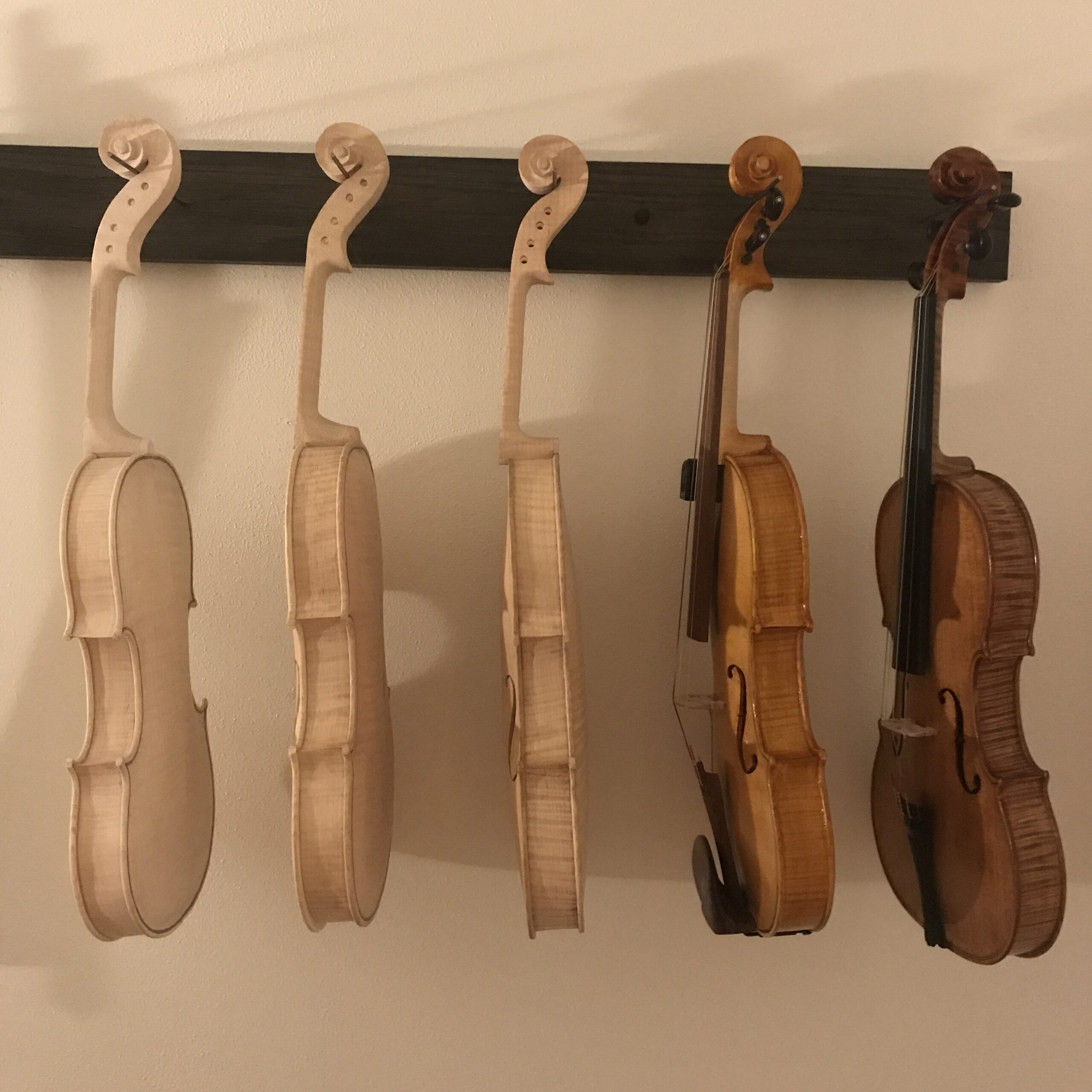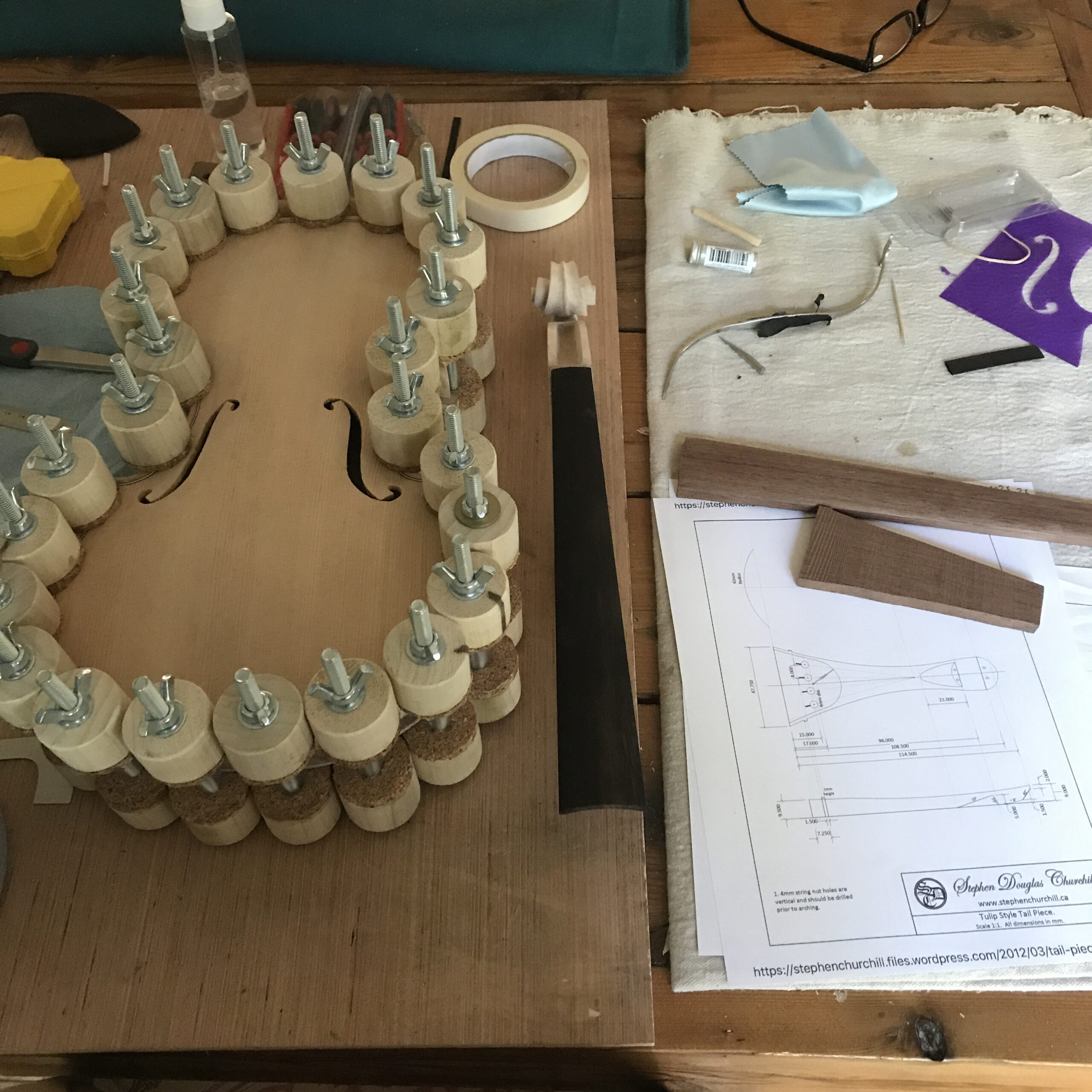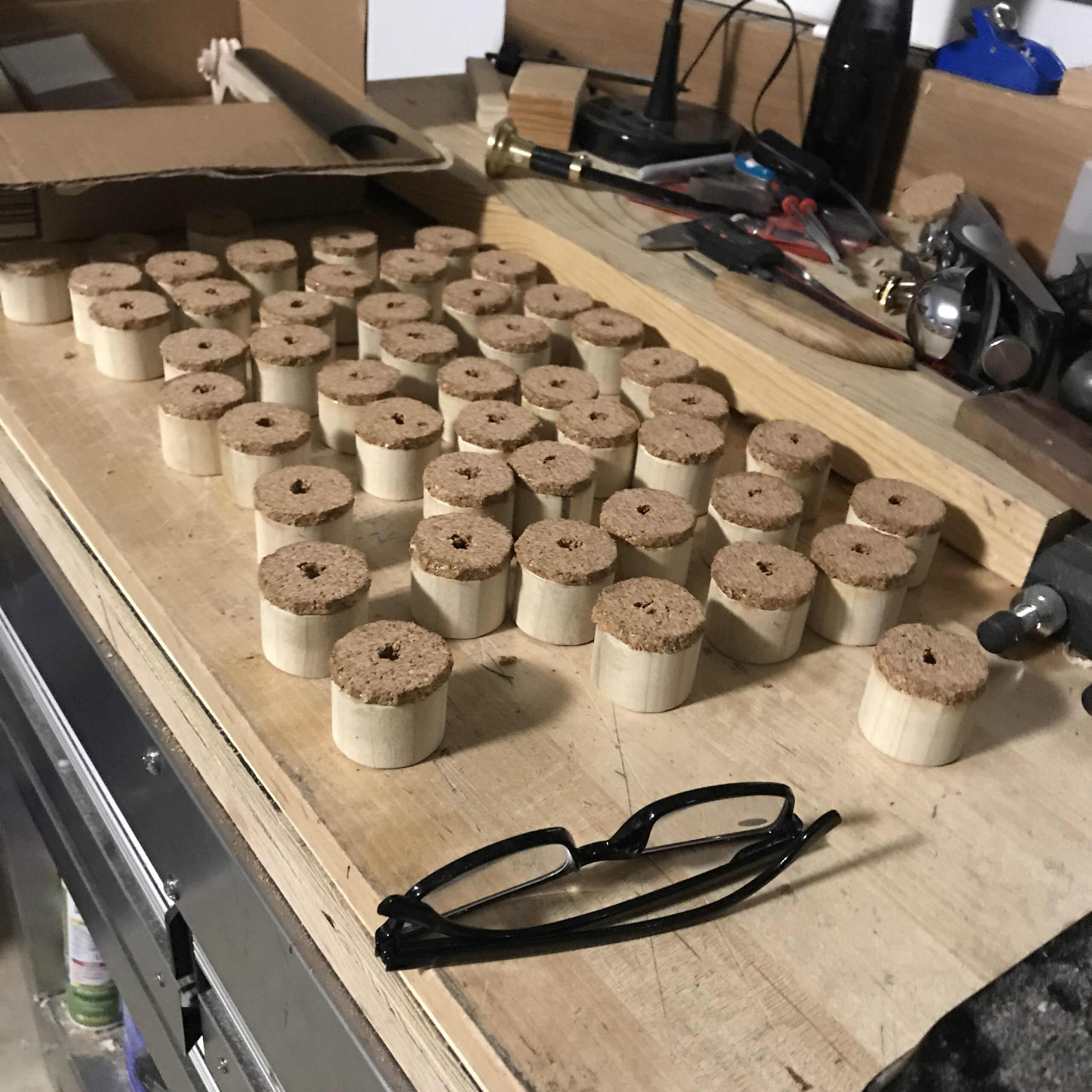I finished preparing violin ribs by shaving maple wood down to 1.2 mm thick. Learning to thinning wood to a veneer thickness with hand tools was tough. I am finally feeling like I got the hang of it; I can still tell I have more room from growth. Fortunately, you don’t have to worry about the tediousness of this task and get on to playing music.
Preparing violin ribs is one of those tasks in violin making where you could make them with a drum sander or some other feeding type machine; the issue will always be with the way the wood looks when it comes out of these machines. Often, the tool marks left on the ribs creates more issues than helps. I think one could easily spend more time fixing tool marks than just doing the work by hand. I know it’s debatable, it’s just my observations.
When making ribs, my low angle block plane is my best friend. I put on an audio book, get setup and then start planning away. The wood I use is typically thicker than what you would by from a regular tonewood dealer. I use to not like starting with thicker wood. I have since changed my attitude when I realized I had more choices with larger rib stock.
I get a couple of additional choices available to me when my wood is less refined. I like that I can adjust the grain direction because my rib stock is wider; so I can change the angle/slope of my ribs. Also, I can work the outside facing portion first to get the crisp smooth edges and still have plenty of thickness in case I mess up. Which I sometimes have a little too much tear out.
My takeaway
Choosing thicker wood does have some challenges. Primarily, the surfaces of my rough stock do not show the flame as much as I like. So, when starting a violin and choosing the rib stock, I have to spend more time looking at the texture of the wood and the grain features. The extra steps definitely keeps me closer to the wood because I have to make decisions. After I choose the rib stock, it’s on to bending ribs.
